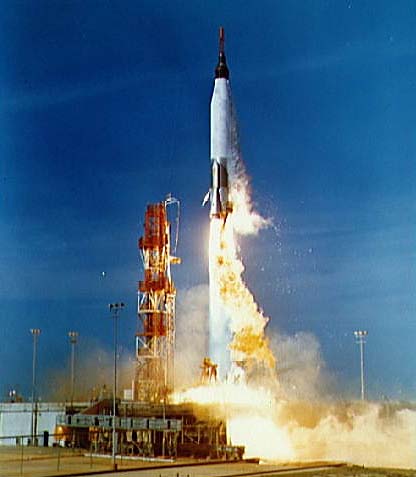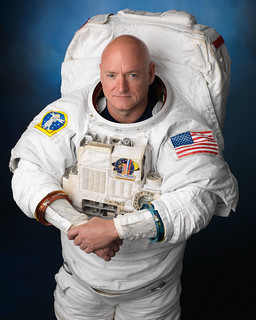
Space History for February 21
If you are not already a subscriber, you are welcome to enter your email address here to sign up to receive the Space History newsletter on a daily basis. Under no circumstances will we release your legitimate email address entered here to outside persons or organizations, and it will only be used for mailing the specific information you have requested.
| Enter your email address here: |
Unsubscribe instructions are included in every newsletter issue in case you decide you no longer wish to receive it.
Note: We record the IP address from which subscriptions are entered to help prevent SPAM abuses.
Race To Space
Someone will win the prize...
... but at what cost?
Visit RaceToSpaceProject.com
to find out more!
1744
Born, Eise J. Eisinga (at Franeker, Frisia Province, Netherlands), Frisian astronomer, built planetarium Franeker
ref: en.wikipedia.org
1788
Died, Johann Georg Palitzsch, the astronomer who first saw Halley's comet on its return during his lifetime, the first return since Halley's death
ref: en.wikipedia.org
1875
Born, Jeanne Calment, who lived for 122 years 164 days, the longest confirmed lifespan for any human being in history.
ref: en.wikipedia.org
1906
A. Kopff discovered asteroid #596 Scheila; and M. Wolf discovered asteroid #586 Thekla.
1916
M. Wolf discovered asteroid #818 Kapteynia.
1926
Died, Heike Kamerlingh Onnes, Dutch physicist (liquid helium, extreme refrigeration, superconductivity, Nobel 1913 "for his investigations on the properties of matter at low temperatures which led, inter alia, to the production of liquid helium")
ref: www.nobelprize.org
1931
Johannes Winkler launched Europe's first liquid-fueled rocket to about 300 meters, in Dessau, Germany.
ref: weebau.com
1936
F. Rigaux discovered asteroid #1378 Leonce.
1938
Died, George Ellery Hale, American astronomer (spectroheliograph, magnetic fields in sunspots, four largest telescopes)
ref: en.wikipedia.org
1947
Edwin Land demonstrated the first "instant camera", the Polaroid Land Camera, to a meeting of the Optical Society of America in New York City.
ref: www.edn.com
1961 13:10:00 GMT
NASA launched MA-2, a suborbital ballistic test flight of Mercury Atlas spacecraft/launch vehicle compatibility to test thermal loads in critical abort. The flight was successful, and reached 172 km altitude.

MA-2 launch, NASA photo
Source: NSSDCA Master Catalog
ref: nssdc.gsfc.nasa.gov
1964
Born, Mark Edward Kelly (at Orange, New Jersey, USA), Captain USN, NASA astronaut (STS 108, STS 121, STS 124, STS 134; over 54d 2h total time in spaceflight), twin of astronaut Scott Kelly

Astronaut Mark Kelly, NASA photo (5 January 2005)
Source: Wikipedia (spaceflight.nasa.gov killed 25 Feb 2021)
ref: en.wikipedia.org
1964
Born, Scott Joseph Kelly (at Orange, New Jersey, USA), Captain USN, NASA astronaut (STS 103, STS 118, ISS 25/26, ISS 43/44, ISS 45/46; 520d 10.5h total time in spaceflight), twin of astronaut Mark Kelly

Astronaut Scott Kelly, NASA photo (11 August 2014)
ref: en.wikipedia.org
1969
B. Burnasheva discovered asteroid #3406.
1969 09:18:06 GMT
USSR launched Zond L1S-1 from Baikonur in the first test of the powerful N-1 rocket booster. The flight ended in failure when an explosion caused the remaining engines to shut down after 70 seconds.
Zond L1S-1 was launched from Baikonur on 21 February 1969 in the first test of the powerful N-1 rocket booster (SL-15/N-1). The payload, a Zond capsule with automatic cameras and a dummy lander, was supposed to be put into Lunar orbit. The cameras would have been used to record potential landing sites for future manned missions. At 3-7 seconds after liftoff, engines 12 and 24 shut down due to an error in the control system, but the remaining engines automatically compensated. At 25 seconds, the engines were throttled back to minimize vibration during the period of maximum dynamic pressure. At 66 seconds after liftoff, at an altitude of about 30 km, the engines throttled up to full power and an oxidizer pipe burst due to the vibration, causing a fire, shorting out wiring, and resulting in the surrounding engines and turbopumps exploding. This caused all remaining first stage engines to shut down and the escape mechanism to fire at 70 seconds, lifting the Zond capsule to safety. The N-1 rocket fell back to Earth and exploded 45 to 50 km downrange, and the Zond capsule landed 32 to 35 km downrange.
ref: nssdc.gsfc.nasa.gov
1972
USSR's Luna 20 landed on the Moon.
Luna 20 was placed in an intermediate Earth parking orbit from its launch on 14 February 1972, and from that orbit was sent towards the Moon where it entered orbit on 18 February 1972. On 21 February 1972, Luna 20 made a soft landing in the Apollonius highlands near Mare Foecunditatis (Sea of Fertility), 120 km from where Luna 16 had impacted. While on the Lunar surface, the panoramic television system was operated, and Lunar samples were obtained using an extendable drilling apparatus. Luna 20's ascent stage of was launched from the Lunar surface on 22 February 1972 carrying 30 grams of collected Lunar samples in a sealed capsule. It landed in the Soviet Union on 25 February 1972; the Lunar samples were recovered the following day.
ref: nssdc.gsfc.nasa.gov
1979 05:00:00 GMT
Japan launched the Hakucho (CORSA-B) x-ray satellite from the Uchinoura Space Center into a 421x433 km orbit.
ref: nssdc.gsfc.nasa.gov
1981 09:30:00 GMT
Japan launched the Hinotori satellite from the Uchinoura Space Center into a 548x603 km orbit to study solar flares.
ref: nssdc.gsfc.nasa.gov
1981 23:23:00 GMT
NASA launched the COMSTAR 4 domestic communications satellite for COMSAT.
ref: nssdc.gsfc.nasa.gov
1992
Died, Frank F. Holden, British/American astronomer (southern hemisphere binary stars)
ref: adsabs.harvard.edu
1996 12:34:00 GMT
Russia launched Soyuz TM-23 from Baikonur to the Mir space station with cosmonauts Onufrienko and Usachyov aboard.
Russia launched Soyuz TM-23 on 21 February 1996 with cosmonauts Onufrienko and Usachyov aboard for Mir Expedition EO-21. Soyuz TM-23 docked with Mir at 14:20:35 on 23 February.
The spacecraft undocked on 2 September 1996 at 04:20 GMT with Yuri Onufrienko, Yuriy Usachyov and Claudie Andre-Deshays aboard, and made a small seperation burn at 04:24:40 GMT. The deorbit burn was executed at 06:47:20 GMT. The three Soyuz component modules separated at 07:14:36, and the parachutes were deployed at 07:26 GMT. Landing occurred at 07:41:40 GMT, 100 km SW of Akmola in Kazakstan. This concluded the French 'Cassiopee' mission.
See also Wikipedia
ref: nssdc.gsfc.nasa.gov
1997 03:32:26 EST (GMT -5:00:00)
NASA's STS 82 (Discovery 22, 82nd Shuttle mission) landed after completing the second Hubble Space Telescope (HST) servicing mission.
STS 82 was originally planned for a 13 February 1997 launch, but the date was moved up to provide more range opportunities. The launch on 11 February followed a countdown that proceeded smoothly. The six member crew completed servicing and upgrading of the Hubble Space Telescope during four planned extravehicular activities (EVAs), then performed a fifth unscheduled space walk to repair insulation on the telescope, demonstrating anew the capability of the Space Shuttle to service orbiting spacecraft, as well as the benefits of human spaceflight.
The HST was retrieved for its second servicing at 3:34 a.m. EST 13 February, and positioned in the payload bay less than half an hour later.
EVA 1 began at 11:34 p.m. EST, 13 February, and lasted six hours, 42 minutes. One of Hubble's solar arrays was unexpectedly disturbed by a gust of air from Discovery's airlock when it was depressurized, but the array was not damaged. Lee and Smith removed the Goddard High Resolution Spectrograph (GHRS) and Faint Object Spectrograph (FOS), and replaced them with the Space Telescope Imaging Spectrograph (STIS) and Near Infrared Camera and Multi-Object Spectrometer (NICMOS), respectively.
EVA 2 began at 10:25 p.m., 14 February, and lasted seven hours, 27 minutes. Harbaugh and Tanner replaced a degraded Fine Guidance Sensor and a failed Engineering and Science Tape Recorder with new spares. They also installed a new unit called the Optical Control Electronics Enhancement Kit, to further increase the capability of the Fine Guidance Sensor. During this EVA, the astronauts noted cracking and wear on thermal insulation on the side of telescope facing sun and in the direction of travel.
EVA 3 began at 9:53 p.m., 15 February, and lasted seven hours, 11 minutes. Lee and Smith removed and replaced a Data Interface Unit on Hubble, and replaced an old reel-to-reel Engineering and Science Tape Recorder with a new digital Solid State Recorder (SSR) to allow simultaneous recording and playback of data. They also changed out one of the four Reaction Wheel Assembly units that use spin momentum to move telescope toward a target and maintain it in a stable position. After this EVA, mission managers decided to add EVA 5 to repair the thermal insulation on HST.
EVA 4 began at 10:45 p.m., 16 February, and lasted six hours, 34 minutes. Harbaugh and Tanner replaced a Solar Array Drive Electronics package which controls the positioning of Hubble's solar arrays. They also replaced covers over Hubble's magnetometers, and placed thermal blankets of multi-layer material over two areas of degraded insulation around the light shield portion of the telescope, just below the top of the observatory. Meanwhile, inside Discovery Horowitz and Lee worked on the middeck to fabricate new insulation blankets for the HST.
The final space walk, EVA 5, lasted five hours, 17 minutes. Lee and Smith attached several thermal insulation blankets to three equipment compartments at the top of the Support Systems Module section of the telescope which contains key data processing, electronics and scientific instrument telemetry packages.
The STS 82 EVA total of 33 hours, 11 minutes is about two hours shy of total EVA time recorded on first servicing mission.
Discovery's maneuvering jets were fired several times during mission to reboost the telescope's orbit by eight nautical miles. Hubble was redeployed 19 February at 1:41 a.m. at the highest altitude it has ever flown, a 335 by 321 nautical mile orbit.
STS 82 ended when Discovery landed 21 February 1997 on revolution 150 on Runway 15 at the Kennedy Space Center, Florida, on the second opportunity after the first waved off due to low clouds. Rollout distance: 7,066 feet (2,154 meters). Rollout time: one minute, zero seconds. Orbit altitude: 360 statute miles. Orbit anclination: 28.45 degrees. Mission duration: nine days, 23 hours, 37 minutes, nine seconds. Miles traveled: 4.1 million. This was the ninth night landing in the Shuttle program's history, and the fourth night landing at KSC.
The flight crew for STS 82 was: Kenneth D. Bowersox, Commander; Scott J. Horowitz, Pilot; Mark C. Lee, Mission Specialist; Steven A. Hawley, Mission Specialist; Gregory J. Harbaugh, Mission Specialist; Steven L. Smith, Mission Specialist; Joseph R. Tanner, Mission Specialist.
ref: www.nasa.gov
2015
Died, Aleksei A. Gubarev (at Moscow, Russian Federation), Major General Soviet Navy, Soviet cosmonaut (Soyuz 17, Soyuz 28; over 37d 11.5h total time in spaceflight)
ref: www.spacefacts.de
We are going to run out of oil!
Visit SpacePowerNow.org
to help fix the problem.
SpacePowerNow.org - For Human Survival
This newsletter and its contents are Copyright © 2006-2025 by The L5 Development Group. All rights reserved. - Publication, in part or in whole, requires previous written permission. - Academic or personal-use citations must refer to http://L5DGbeta.com as their source. Thank you for your cooperation.

